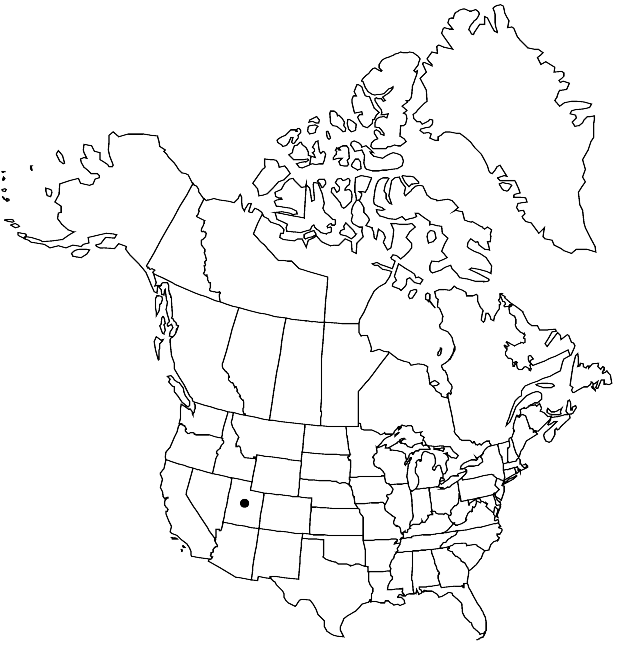Draba burkei
Madroño 50: 221. 2004.
Perennials; (cespitose, forming loose mats); caudex branched (with persistent leaves, branches sometimes terminating in sterile rosettes); scapose. Stems unbranched, 0.3–0.6(–0.9) dm, glabrous. Basal leaves subrosulate; subsessile; blade oblanceolate to obovate, 0.3–0.8(–1.3) cm × 1–2.5 mm, margins entire, (ciliate, trichomes simple, subsetiform, 0.25–0.8 mm), surfaces glabrous. Cauline leaves 0. Racemes 4–10-flowered, ebracteate, elongated in fruit; rachis not flexuous, glabrous. Fruiting pedicels divaricate-ascending to ascending, straight, 4–9(–15) mm, glabrous. Flowers: sepals broadly ovate, 2–3.5 mm, glabrous or sparsely pubescent, (trichomes simple, 0.07–0.35 mm); petals yellow, oblanceolate, 4–6 × 1.5–2 mm; anthers ovate, 0.4–0.5 mm. Fruits ovate, plane, flattened, 3–5.5 × 2–3.2 mm; valves glabrous or puberulent, trichomes simple, 0.02–0.08 mm; ovules 4–10 per ovary; style 0.5–1.7 mm. Seeds ovoid, 1–1.4 × 0.7–1 mm. 2n = 20.
Phenology: Flowering May–Jul.
Habitat: Rocky ridges, steep talus slopes, rock outcrops and crevices
Elevation: 1600-3000 m
Distribution

Utah.
Discussion
Of conservation concern.
Draba burkei was treated by C. L. Hitchcock (1941) and R. C. Rollins (1993) as a variety of D. maguirei. Chromosome numbers (2n = 20 versus 2n = 32), plant morphology, and molecular data support the recognition of these taxa as independent species (M. D. Windham 2004). Draba burkei is easily distinguished from D. maguirei by having exclusively simple trichomes confined to leaf blade margins (versus mostly branched trichomes on margins and surfaces) and smaller seeds (1–1.4 × 0.7–1 versus 1.6–2 × 1–1.3 mm). It is known from Box Elder, Cache, Morgan, and Weber counties, where it approaches but does not overlap the range of D. maguirei. Draba burkei (as D. maguirei var. burkei) is in the Center for Plant Conservation’s National Collection of Endangered Plants and is listed in NatureServe as a plant of conservation concern.
Selected References
None.